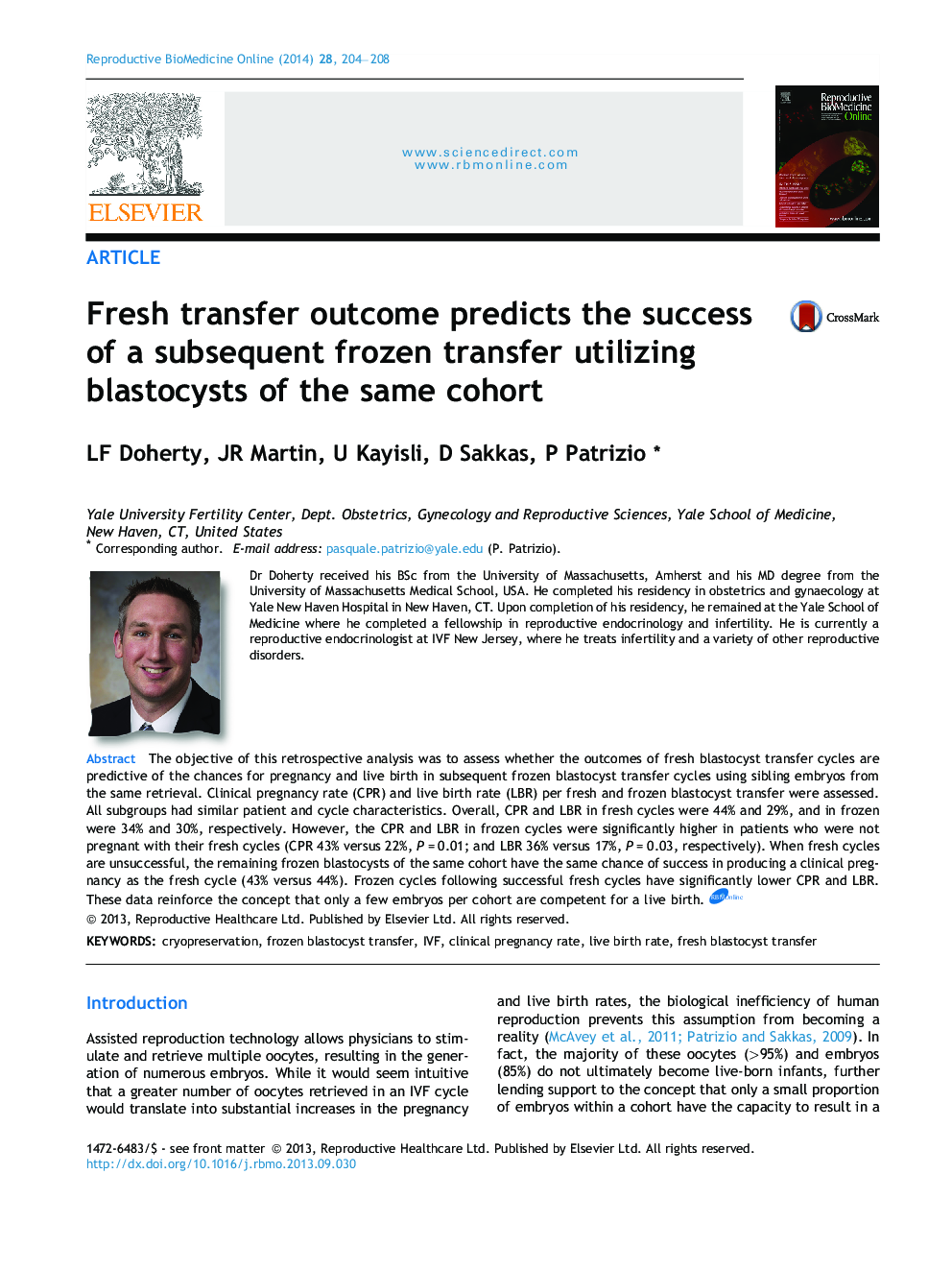| کد مقاله | کد نشریه | سال انتشار | مقاله انگلیسی | نسخه تمام متن |
|---|---|---|---|---|
| 3970285 | 1256715 | 2014 | 5 صفحه PDF | دانلود رایگان |
The objective of this retrospective analysis was to assess whether the outcomes of fresh blastocyst transfer cycles are predictive of the chances for pregnancy and live birth in subsequent frozen blastocyst transfer cycles using sibling embryos from the same retrieval. Clinical pregnancy rate (CPR) and live birth rate (LBR) per fresh and frozen blastocyst transfer were assessed. All subgroups had similar patient and cycle characteristics. Overall, CPR and LBR in fresh cycles were 44% and 29%, and in frozen were 34% and 30%, respectively. However, the CPR and LBR in frozen cycles were significantly higher in patients who were not pregnant with their fresh cycles (CPR 43% versus 22%, P = 0.01; and LBR 36% versus 17%, P = 0.03, respectively). When fresh cycles are unsuccessful, the remaining frozen blastocysts of the same cohort have the same chance of success in producing a clinical pregnancy as the fresh cycle (43% versus 44%). Frozen cycles following successful fresh cycles have significantly lower CPR and LBR. These data reinforce the concept that only a few embryos per cohort are competent for a live birth.During IVF cycles, many patients are fortunate enough to have excess high-quality embryos remaining after their embryo transfer. These embryos can be frozen, or cryopreserved, for later transfer. The transfer of cryopreserved embryos increases the cumulative success rates after a single IVF stimulation. Many studies have examined success rates such as clinical pregnancy rate and live birth rate in frozen embryo transfer cycles. While these frozen embryo transfer cycles have excellent success rates, they are significantly lower than success rates in cycles where a “fresh”, non-frozen, embryo is transferred. Few studies have carefully examined the impact of the result of the fresh embryo transfer (whether the patient became pregnant or not) on subsequent frozen embryo transfer success. Here we show that women who are not pregnant after a fresh embryo transfer have higher success rates in subsequent frozen embryo transfer cycles that use frozen embryos generated during a single IVF cycle. In these women (not pregnant after a fresh embryo transfer), frozen embryo transfer pregnancy rates are the same as rates using fresh embryos.
Journal: Reproductive BioMedicine Online - Volume 28, Issue 2, February 2014, Pages 204–208
